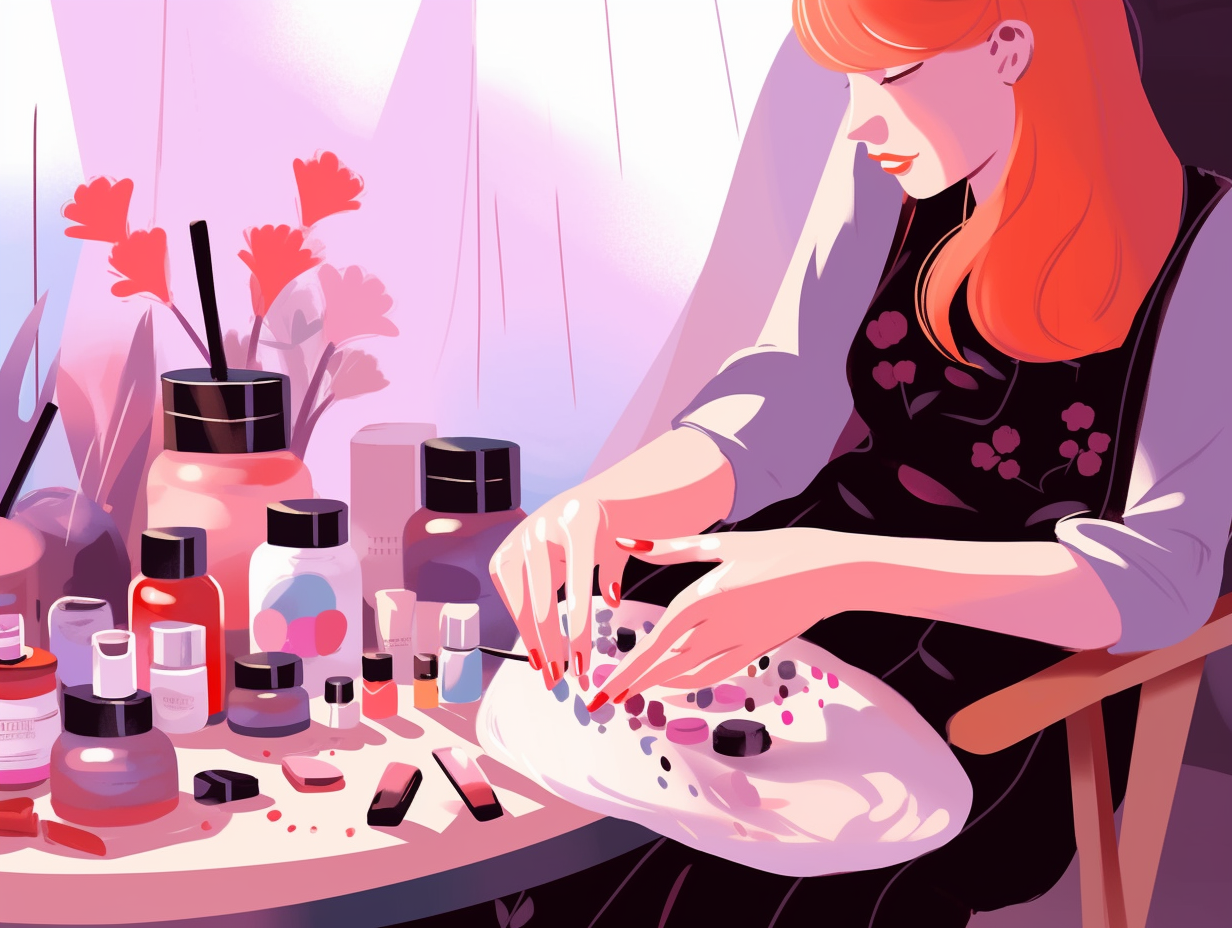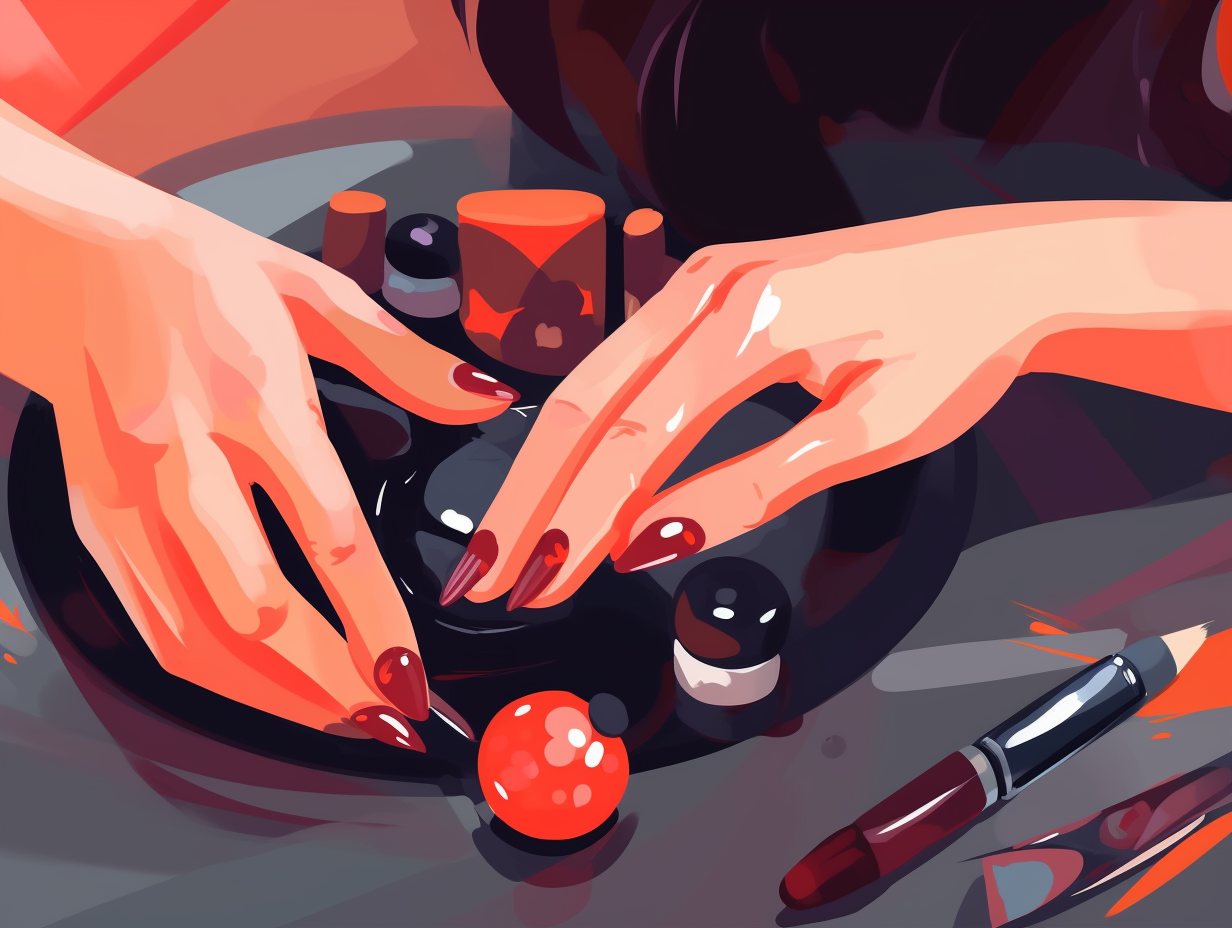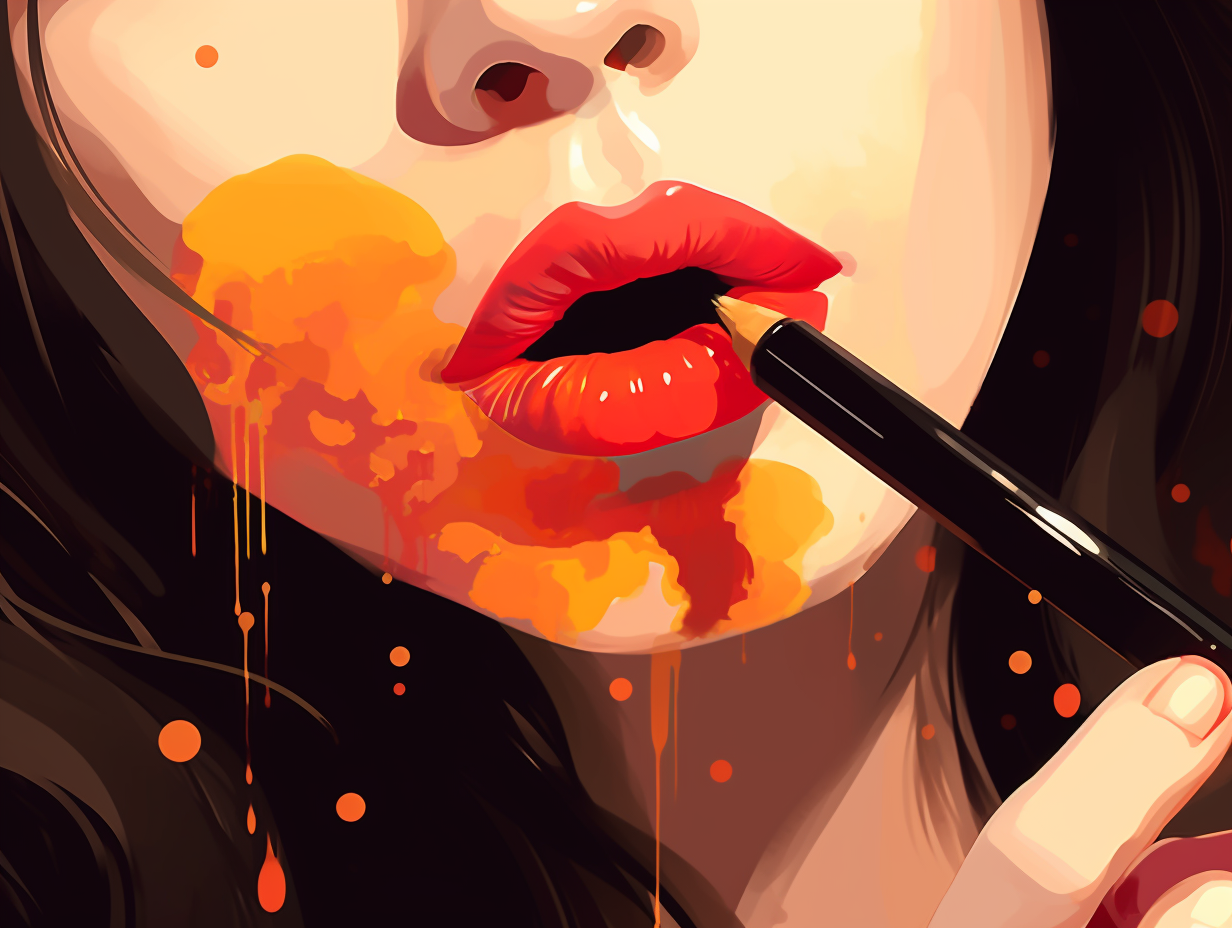Discover the Colorful World of Nail Polish: Top 12 Fun Facts You Never Knew!

1. Chinese Royal Nail Tradition
Next time you're "egg-cited" about painting the town red, remember that you're continuing a 5000-year-old Chinese royal tradition: The first known use of nail polish, around 3000 BCE in China, was a splendid concoction of egg whites, beeswax, vegetable dyes, gum arabic, and gelatin, and it was flaunted by both male and female royals as a symbol of elite elegance!
Source => en.wikipedia.org
2. Mood-changing Polishes
Feeling hot, hot, hot, or cool as a cucumber? Watch as your nails paint a color-filled picture of your mood: Thermochromic polishes use microcapsules with leucodyes and an acid, altering colors based on temperature changes, while photochromic polishes utilize light-sensitive compounds that change colors when exposed to sunlight, adding benzophenone-1 to protect against fading.
Source => compoundchem.com

Did you know that your nails grow slower in colder weather due to reduced circulation? Discover how temperature affects these fascinating keratin extensions and what it means for your nail health!
=> Fun Facts about Nails
3. Beware of Bug-derived Red Pigment
When you're trying to "nail" that perfect mani-pedi look, you might be bugging out over the ingredient list in your favorite bottle of red polish: Traditional nail polishes often contain carmine, an ingredient derived from crushed bugs in the Cochineal family, which provides a red pigment not just in nail polish but also in other cosmetics like lipstick. Beware all you vegan polish enthusiasts, carmine should be on your "to-swatch" list of ingredients to avoid!
Source => beautygarde.com
4. Beeswax & Egg Whites: OG Nail Stylists
Long before anyone could say "Honey, I lacquered up my nails!", beeswax and egg whites were the OG nail stylists: Nail polish dates back to 3000 BC in China, where high society members used ingredients like beeswax, egg whites, gelatin, vegetable dyes, and gum Arabic to paint their nails with henna. In the 19th and early 20th centuries, tinted powders and pastes were popular, with nails being buffed until shiny. But it took a trip to France in 1920 and the innovation of the Northam Warren Corporation for the true birth of modern nail polish, inspired by the glossy car paint industry and using nitrocellulose.
Source => hagley.org

5. Hand Sanitizer: Unexpected Nail Polish Remover
In a sticky situation where your fingertips are painted like Van Gogh's melting clock but you need a fresh canvas faster than you can say "Hand me the acetone!": Fear not, for your trusty hand sanitizer is here to save the day, doubling as an unexpected knight in shining, germ-killing armor when it comes to removing your nail polish in record time!
Source => stylecraze.com
6. Long Nails as a Social Status Symbol
Back in ancient China, having long nails wasn't just a case of forgetting the clippers - it was an elite fashion statement that declared, "I don't lift a finger, literally!": Despite popular belief that only the upper class painted their nails, people from various social classes in ancient Egypt, Babylonia, and China actually adorned their nails with different colors and designs, symbolizing wealth and status.
Source => chinatemper.com
7. Babylonian Golden Manicure Set
Back in the day, an ancient Babylonian Gucci manicure set would put modern luxury to shame: Featuring solid gold tools, the elite donned black nail polish, while the "budget-conscious" went for a green hue. No discrimination here – both Babylonian men and women flaunted their digits, though it remains a mystery whether kohl was used to dress up their nails for social functions.
Source => marieclaire.com
8. Save Your Nails: Don't Store Polish in the Bathroom
Ladies and gentlemen, prepare to have your minds blown and your nails saved — all thanks to a bathroom ban: Storing your nail polish in the bathroom can lead to thickening and an eventual gloopy death for your favorite shades. Keep them in a cool, dry place with a consistent temperature to extend their fabulous lives.
Source => orlybeauty.com
9. Cutex's 1928 Nail Polish Remover Revolution
Before nail polish remover broke onto the scene, switching your nail hue must've required a time-traveling manicure or a quick dip into a magical paint-removing potion: But in fact, it was 1928 when Cutex brought forth an acetone-based nail polish remover safe enough for the masses to use at home, resulting in an explosion of color changes and the popularization of nail polish as we know it today.
Source => en.wikipedia.org

10. 18 Different Nail Polish Finishes
Searching for the nail polish finish that truly "nails" your look? Well, buckle up, fashionista: There are 18 different types of nail polish finishes on the market, ranging from crème and sheer to jelly and metallic, offering a diverse array of options for every occasion and mood.
Source => kiarasky.com
11. Colorful Claws: Nail Polish for the Elite Throughout History
Once upon a highbrow time, when fancy gentry flaunted their colorful claws in ancient lands far away, the lowly peasants could only dream of such posh paws: Nail polish was a symbol of wealth and power in ancient China, India, Africa, and the Middle East, with only rulers and the elite allowed to wear it, from Cleopatra's crimson plant extract to nitrocellulose-based lacquer in World War 1 America, evolving to today's safer, long-lasting formulations.
Source => sienna.co
12. Let Your Nails Breathe with Breathable Polish
Whoever said "nails can't breathe" clearly hasn't met breathable nail polish! This fashionable airhead of the nail world threw the stuffy tradition of suffocating our fingertips right out the salon window: Breathable nail polish allows air and moisture to pass through, keeping your nails healthy and chip-free, while traditional polish leaves nails waterlogged and prone to damage. So laugh alongside your nails as they enjoy the fresh air, and upgrade your nail game with a splash of breathable polish!
Source => byrdie.com
Related Fun Facts




















